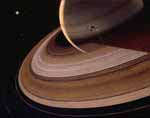Charting our health by the stars is a study conducted in Ontario to find correlations between Zodiacal signs and health, to illustrate how easy it can be for a study to produce false results.
Their conclusion:
“There is a danger in basing scientific decisions on the results of one study, particularly if the results were unanticipated or the association was one that we did not initially decide to examine,” says Austin. “But when several studies all arrive at similar conclusions, we reduce the risk of arriving at an incorrect outcome.”
I would note that most news stories about science are actually reports of one-time studies with surprising results. Is any wonder that the public can dismiss science as fickle 'first they said this, now they say that' flip-flopping given the nature of how it is reported. You're rarely going to see a breaking news flash that there is now large-scale scientific consensus on a particular topic. Instead, you're likely to hear that a single study shows
Cocoa may improve brain blood flow, or something similarly biased towards small dietary changes saving your life. At least, when it isn't an out-and-out
human interest story.
Zodiac study via
Wired.

